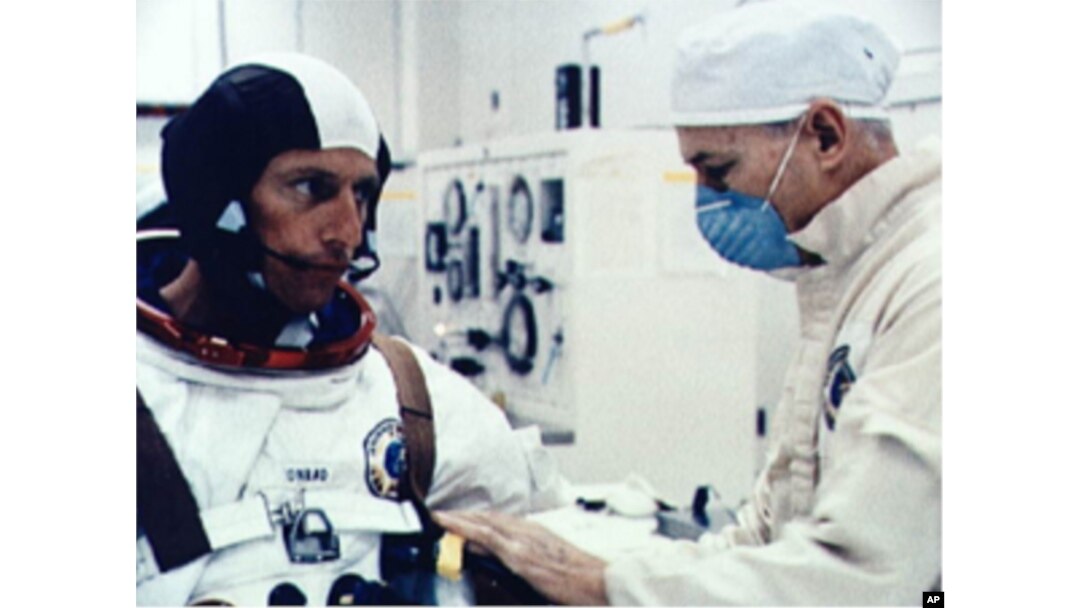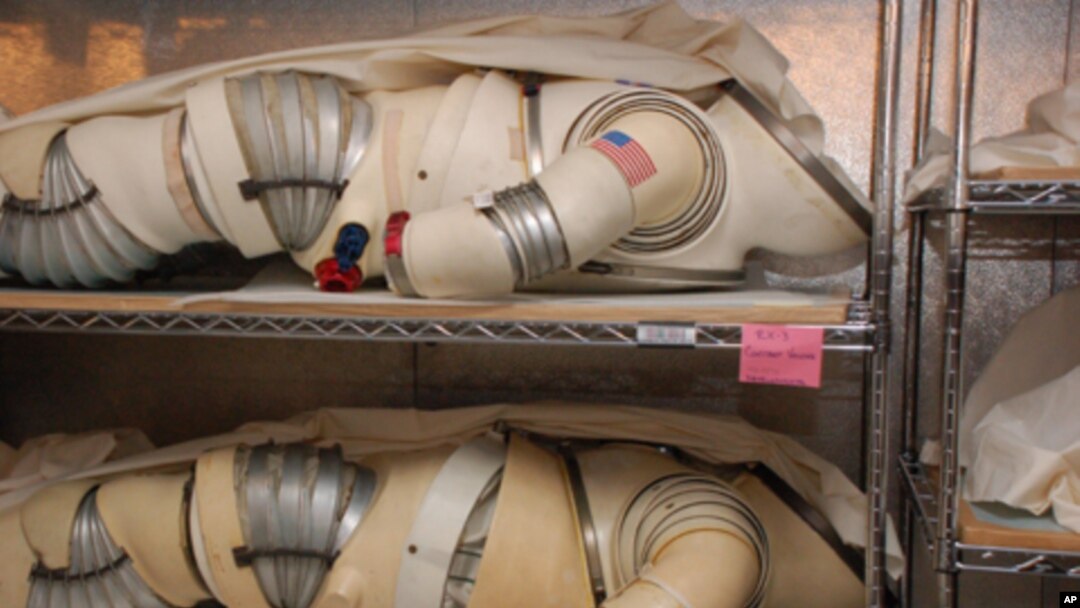Six astronauts lifted off on one of NASA's final space shuttle flights this week. During Discovery’s 11-day mission, the crew will conduct two spacewalks to do maintenance and install equipment. Spacewalks have become pretty routine, but they would not have been possible without a remarkable bit of engineering.
No one appreciates the technology and design of the spacesuit more than Dr. Joseph Kerwin, who in 1973, was one of the first astronauts to conduct in-space repairs. He and fellow astronaut Pete Conrad fixed a jammed solar panel on the Skylab space station.

Astronaut Joseph Kerwin suits up.
That would not have been possible without the spacesuit, which Kerwin describes as "a little spacecraft." The suit provided protection from meteorites and vacuum. It circulated oxygen, removed carbon dioxide, kept the astronauts cool, provided communication and enough mobility to do the job.
Kerwin says it took some getting used to it initially. "The first time you put it on, it takes a while and you need help to get the zippers zipped, and when you are inside it doesn’t quite fit properly,and then they inflate it and you can hardly move." But he says after spending 1000 hours training, including sessions under water and in a vacuum chamber, "you own that suit."
Not in the literal sense. All suits which have returned from space, more than 200 of them, belong to the Smithsonian Institution’s Air and Space Museum.
"In the days when I worked here, it was about one third of the collection was on display both here and at museums around the world at any given time," says Amanda Young, a retired curator and author of "Spacesuits: The Smithsonian National Air and Space Museum Collection."
In addition to flown suits, the museum has gloves, helmets and other ancillary equipment. Most are stored at a facility 10 kilometers from Washington, in a room where humidity and temperature are carefully controlled. Kerwin’s suit is here. So is that of Neil Armstrong, the first man to walk on the Moon. There are suits from the earlier Mercury missions, and several experimental suits which were never used. Stored on shelves, they are shrouded under protective covering.
All suits which have returned from space, more than 200 of them, belong to the Smithsonian Institution’s Air and Space Museum.
"We have discovered that they are extremely fragile. They are very heavy," says Young. "It is sort of a lifetime’s work preserving them, because at the time they were made - because of the rush of the program requirements - it wasn’t really a consideration what to do with them when they came back."
It was up to Young to figure that out, which she painstakingly did. Thanks to her efforts and those of her successors, spacesuits will be around for generations - an out-of-this-world legacy that endures here on earth.


